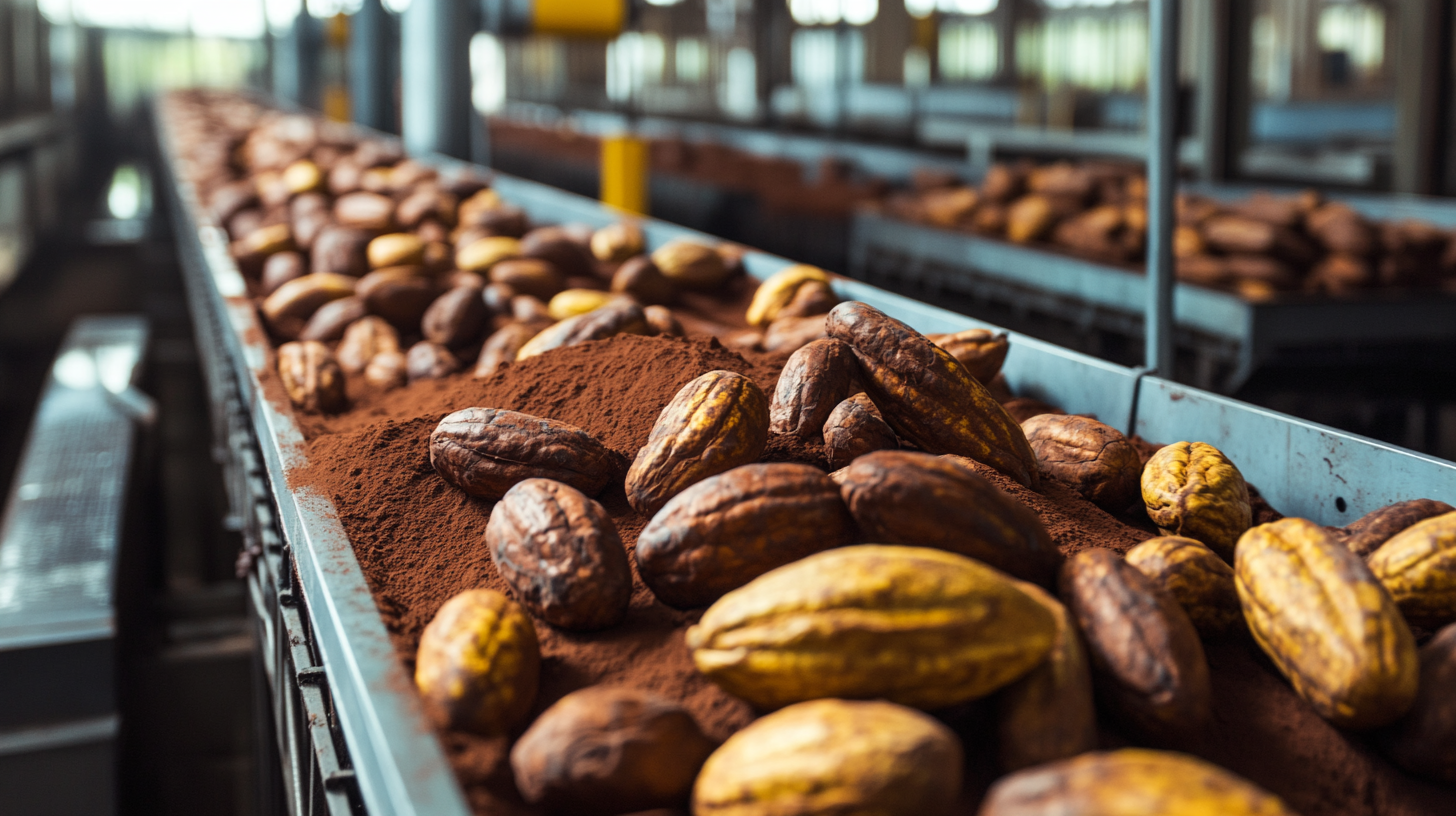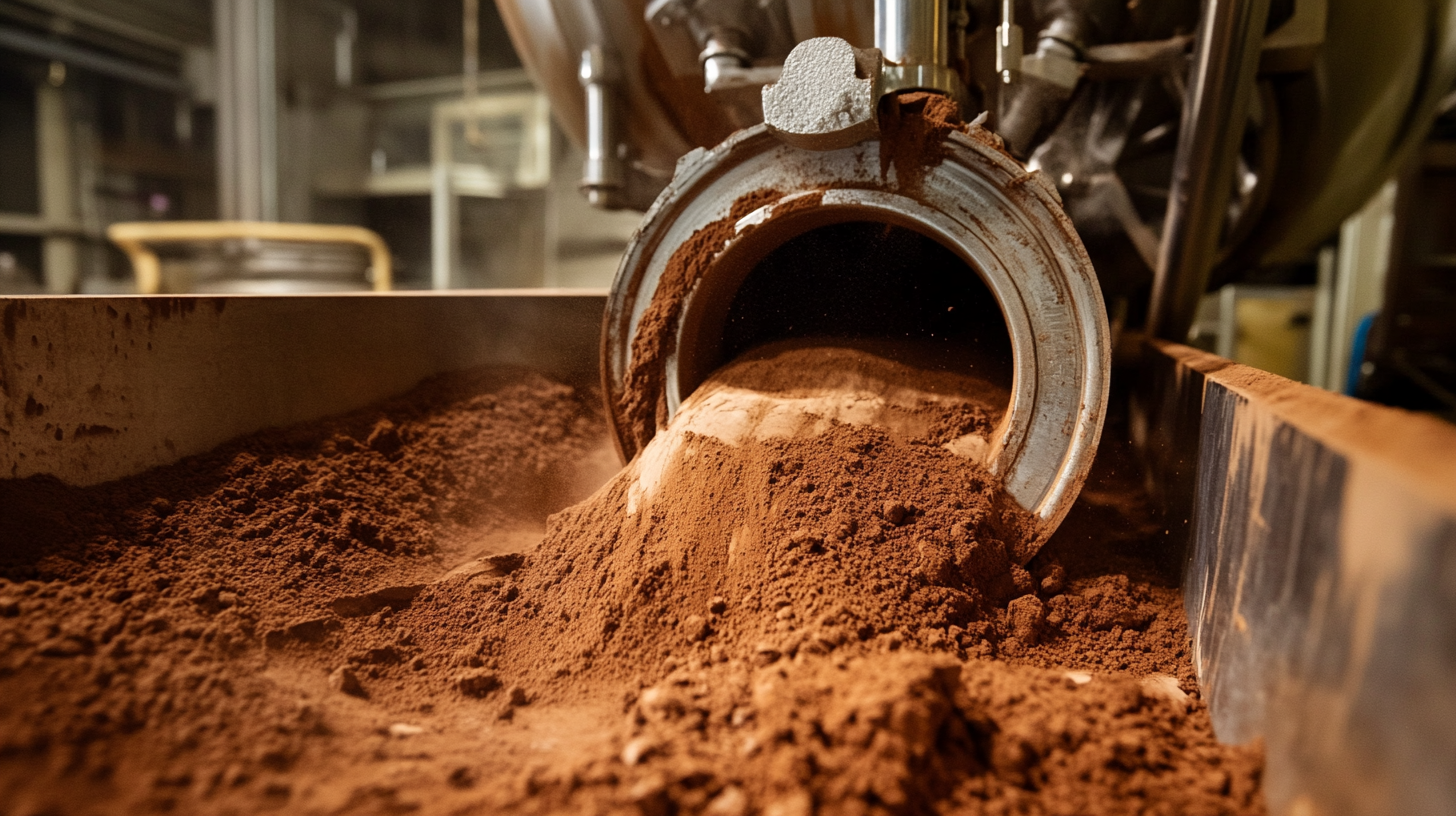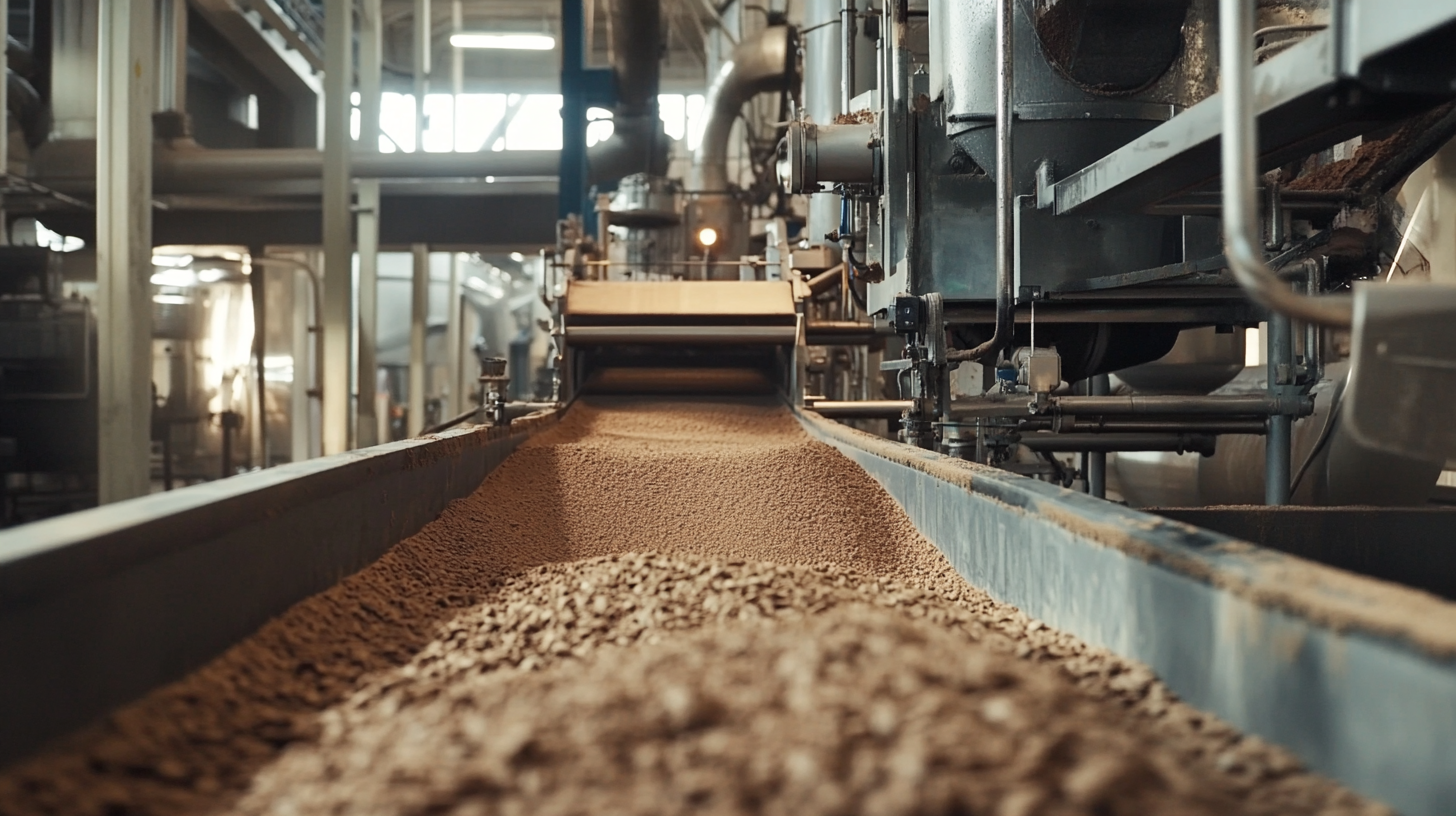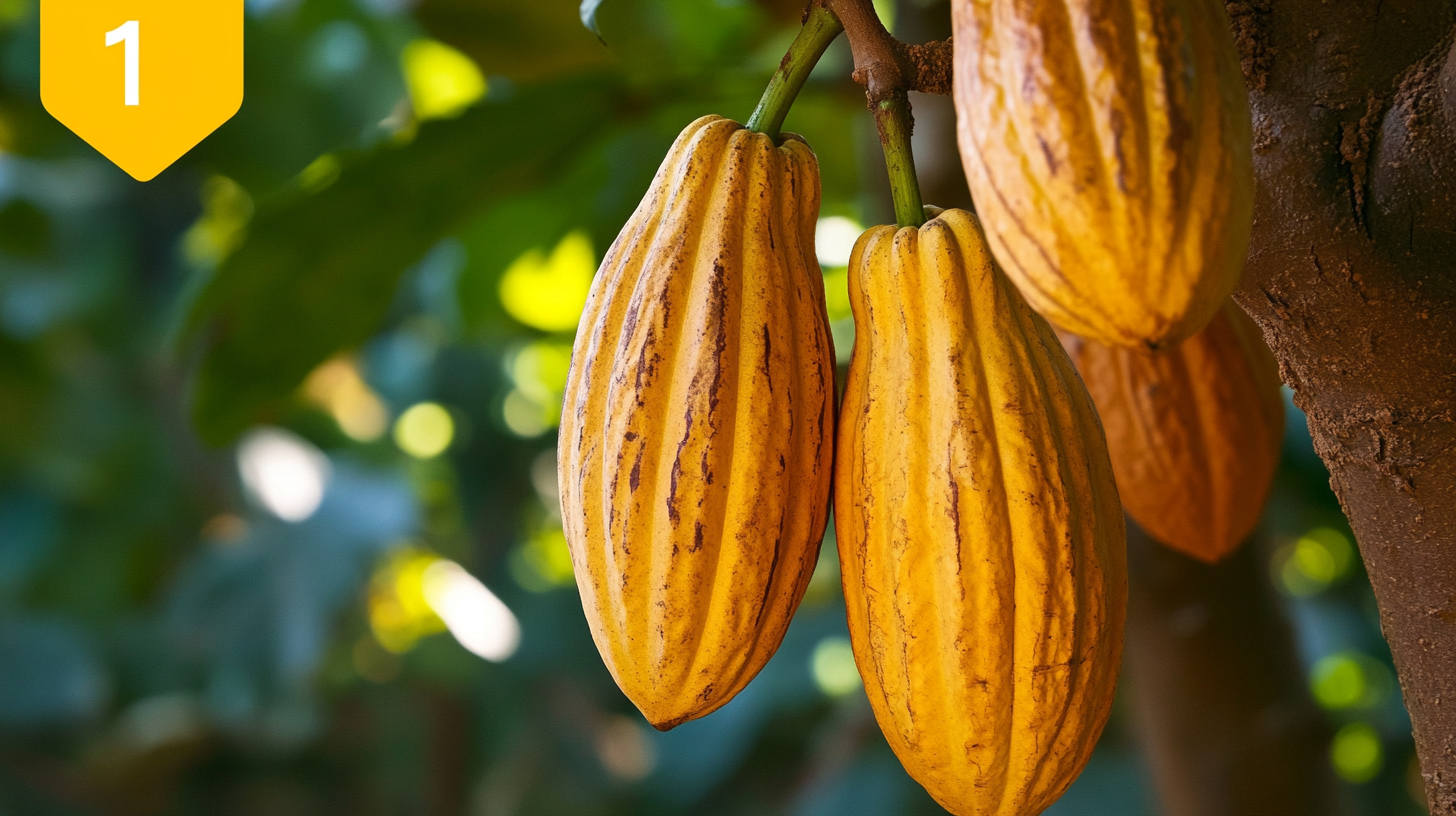Cocoa Powder Processing Machine Insights for Seeking the Best Options
In the ever-evolving world of food processing, the demand for high-quality cocoa products has surged, making the choice of equipment more crucial than ever. A Cocoa Powder Processing Machine serves as the cornerstone of this industry, enabling manufacturers to transform raw cocoa beans into a fine powder that forms the basis for chocolate and various confections. With advancements in technology and an increased focus on efficiency, it’s important to explore the myriad of options available and understand how they can impact the final product quality, production costs, and overall operational effectiveness.
As we delve deeper into the insights surrounding Cocoa Powder Processing Machines, we'll examine various factors that influence the selection process, including machine types, capacities, and features tailored for different processing needs. By understanding these elements, businesses can make informed decisions that not only enhance productivity but also maintain the integrity of cocoa’s rich flavors and nutritional benefits. This blog will guide you through the essential considerations, helping you to pinpoint the best options for your cocoa processing endeavors, ensuring you meet market demands while maximizing your investment.

Cocoa Powder Market Trends: Understanding the Demand and Supply Dynamics
The cocoa powder market is experiencing significant shifts in demand and supply dynamics, driven by evolving consumer preferences and market innovations. According to a recent report, the global cocoa and chocolate market is projected to reach USD 10.86 billion by 2033, growing at a compound annual growth rate (CAGR) of 6.24%. This growth trajectory is largely influenced by the rising popularity of chocolate-flavored beverages and the premiumization trend in chocolate products. As the market expands, cacao bean production is expected to evolve dynamically, fueled by a forecasted 7% CAGR from 2025 to 2033. This growth reflects not only an increasing consumer base but also a heightened demand for high-quality cocoa products. The market is anticipated to grow by USD 3.58 billion from 2025 to 2029, indicating a robust appetite for innovative cocoa applications, particularly those linked to health-conscious options like dark chocolate. Market forecasts also suggest that cocoa prices will rise by an annual rate of 4.5% until 2029, pointing to the ongoing shifts in market dynamics and consumer trends. Companies are adapting by optimizing their supply chains and leveraging advanced technologies to enhance product offerings. The cocoa industry is on the brink of transformation, with opportunities arising from new consumer behaviors and an increasing inclination towards artisanal and premium chocolate products.

Key Features of Cocoa Powder Processing Machines: What to Look For
When investing in a cocoa powder processing machine, understanding the key features to look for can significantly enhance your production quality and efficiency. One of the most crucial aspects is the machine's grinding system. A high-quality grinding mechanism will ensure that cocoa beans are processed to a fine, consistent powder, which is vital for maintaining the rich flavor and aroma that cocoa enthusiasts demand. Look for machines that offer multiple grinding settings, allowing you to customize the fineness based on your specific product requirements.
Another important feature to consider is the machine's capacity and throughput. Depending on your production scale, you'll want a machine that can handle your volume efficiently without compromising on quality. Machines designed for industrial use often have higher capacities and faster processing times, which can be essential for larger operations. Additionally, consider the energy efficiency of the machine. Modern cocoa processing machines can save on energy costs while minimizing their environmental impact, a significant factor for many businesses today.
Lastly, ease of maintenance is a feature that should not be overlooked. Machines that are easy to clean and maintain contribute to less downtime and a more streamlined production process. Look for models that provide accessible parts for cleaning and regular maintenance, as this will not only prolong the machine’s life but also ensure consistent product quality. Investing time in evaluating these key features will help you choose the best cocoa powder processing machine tailored to your needs.

Comparative Analysis of Cocoa Powder Processing Technologies
The production of cocoa powder has evolved significantly with various processing technologies emerging to meet market demands. Comparing the different methods is crucial for manufacturers seeking efficiency and quality in their cocoa products. Traditional methods involve natural fermentation and sun-drying, which, while effective, can be time-consuming and lead to variability in flavor and quality.
Modern cocoa processing technologies have introduced more refined approaches such as mechanical pressing and solvent extraction. Mechanical pressing allows for better oil extraction and consistent texture in powder form, but requires substantial investment in equipment and technology. On the other hand, solvent extraction can maximize yield but may compromise the flavor profile, raising concerns among quality-focused producers.
In addition to these methods, innovations like supercritical CO2 extraction have emerged, offering a solvent-free approach to obtaining cocoa butter and powder with enhanced flavor retention. This technique appeals especially to premium brands aiming to maintain the integrity of the cocoa's natural flavor while ensuring a higher product yield. Each processing method presents its own set of advantages and challenges, underscoring the need for careful consideration when seeking the best option in cocoa powder production.

Sustainability in Cocoa Processing: Innovations and Best Practices
In recent years, sustainability has become a crucial consideration in cocoa processing, as the industry grapples with the environmental and social impacts of traditional farming and production practices. Innovations in cocoa powder processing machines play a significant role in promoting sustainable practices, from reducing waste to enhancing efficiency. By leveraging advanced technology, manufacturers can improve the extraction process of cocoa, ensuring that every bean is utilized optimally and minimizing the carbon footprint associated with production.
One notable trend is the development of eco-friendly machinery that utilizes less water and energy, effectively addressing two significant environmental concerns in cocoa processing. These machines are designed to minimize energy consumption during grinding and refining, thus leading to lower operating costs and less strain on natural resources. Furthermore, some manufacturers are integrating renewable energy sources into their production facilities, showcasing a commitment to not only productivity but also environmental stewardship.
Sustainable cocoa processing also emphasizes ethical sourcing and fair trade practices. By selecting machines that support traceability and transparency in the supply chain, producers can ensure that they are working with farmers who adhere to sustainable practices. This not only benefits the environment but also fosters community development, ensuring that cocoa farmers are compensated fairly for their labor. By focusing on these innovative approaches, the cocoa industry can move towards a more sustainable future, balancing profitability with responsibility.
Cost-Benefit Analysis of Investing in Cocoa Powder Processing Equipment
Investing in cocoa powder processing equipment presents a significant opportunity for businesses looking to capitalize on the expanding global chocolate market, projected to reach a value of USD 10.86 billion by 2033, with a robust annual growth rate of 6.24%. A thorough cost-benefit analysis becomes essential when considering the acquisition of processing machines. This analysis helps stakeholders to evaluate the initial capital required against potential long-term gains from increased production efficiency and market demand.
The setup of a cacao powder manufacturing plant should be approached with meticulous planning and market insights. Understanding the trends that drive cocoa consumption can guide decisions on the types of equipment needed, as well as the scale of operation. Moreover, companies should consider the economies of scope that can be leveraged, allowing them to diversify product offerings and ultimately reduce costs. By integrating efficient processing technologies, businesses can not only meet demand but also enhance competitiveness in this dynamic sector.
Furthermore, it’s critical to examine the value chain and identify key players in the global cocoa and chocolate market. Establishing partnerships with suppliers and distributors can significantly impact the success of a new manufacturing facility. By aligning with market leaders and taking note of their strategies, budding entrepreneurs can create a solid foundation for their operations, ensuring they are well-positioned to seize forthcoming opportunities in the cocoa industry.

